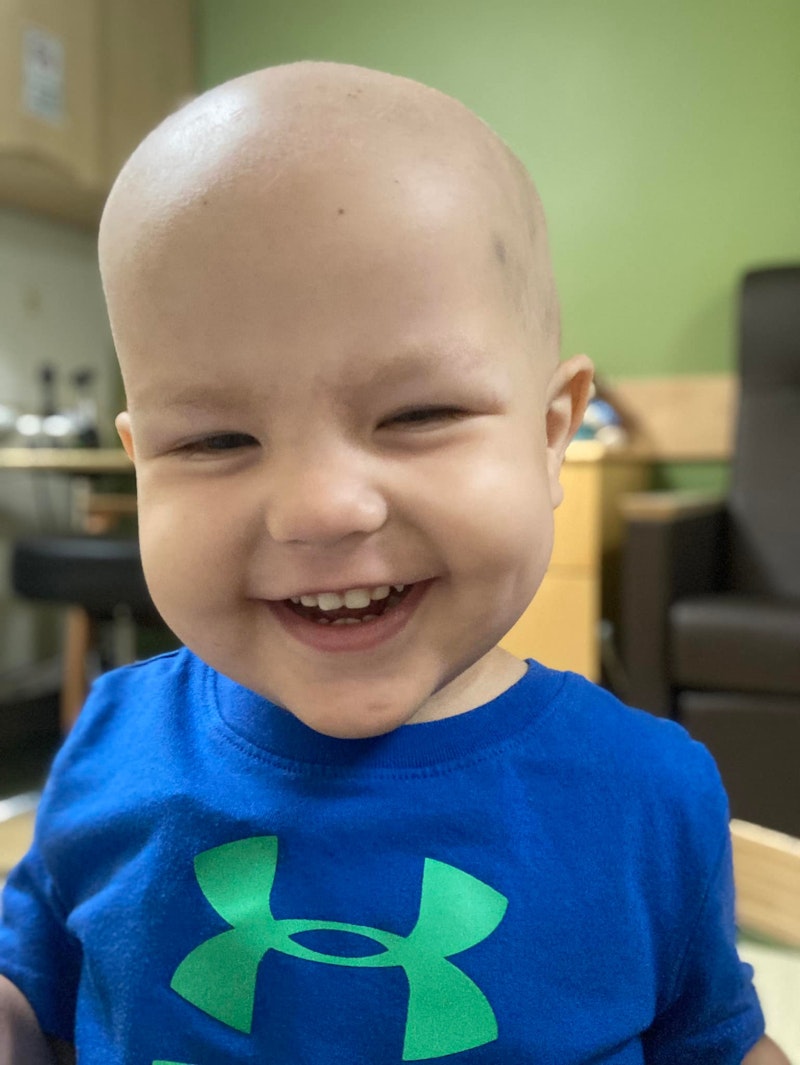Cameron Sear's Recipient Story

JULY 18, 2022
Between four straight days of in-home injections, a near-daily oral pill, and weekly doses into a port placed underneath his skin, Cameron Sears’ mother, Kelly, has a hard time keeping track of just how much chemotherapy her little boy has taken since he was diagnosed with acute lymphoblastic leukemia in February 2022.
“It’s a lot,” Kelly said.
Willfully taking what is essentially poison is a lifesaving measure to target and kill cancer cells in Cam’s 2-year-old body, but it is not one without significant consequences.
Kelly and her husband, Brandon, from Versailles, Kentucky, helplessly watched as Cam’s energy and spirit whittled away in the early stages of treatment at the University of Kentucky Markey Cancer Center in Lexington, Cam was robbed of red and white blood cells from a vicious combination of leukemia, chemo, and steroids.
“He didn’t walk for 40 days because he just couldn’t,” Kelly said. “He couldn’t bear weight. His calf muscle was basically gone. It was skin and bone. He was in a lot of pain. We went weeks and weeks without hearing him laugh or smile. He was just mad or crying. It was awful.”
Cam is doing better now that he’s past the brutal induction phase, but for the better part of the next two years, he will have to endure significant side effects from treatments. Blood transfusions will become almost as regular as the chemo cocktails Cam must consume, mandatory transfusions to counter the toxic chemotherapy and replenish his system.
Early in Cam’s leukemia diagnosis, his hemoglobin dropped to 3.5 and his platelet count was 16,000. An average hemoglobin level for a toddler is 11 to 14, and a healthy platelet count runs between 150,000 to 400,000. At those dangerously low levels, Cam was at significant risk of death from heart failure or internal bleeding.
Watch Cameron's Story
Knowing how often Cam will need blood, it’s scary for Kelly to think about how low the blood supply most of the nation has operated during the COVID-19 pandemic.
“Cancer patients alone, I don’t know how they don’t just deplete the whole supply for as much as they need,” Kelly said. “With certain cancers like Cam’s, needing treatment for two and a half years, that’s a long time to need blood. Even if you only got it once a month, that’s a lot of blood.”
Make a difference in someone's life - schedule a donation today!
More than a quarter of the U.S. blood supply is used by patients like Cam battling cancer. In just the first three months since his diagnosis, Cam needed nine whole blood transfusions and six platelet transfusions.
With that knowledge, it’s hard for Kelly to understand why more people don’t donate. She believes people are inherently good and are always looking for ways to help others. In her opinion, giving blood is one of the easiest and most impactful ways people can truly make a difference.
“People waste their time doing so many other things that are pointless and don’t help anyone,” Kelly said. “It’s a small thing you can do, but it has a huge impact. If you could give one tiny little hour of your time, you could literally save someone’s life.”
About Kentucky Blood Center
KBC, the largest independent, full-service, nonprofit blood center in Kentucky, has been saving local lives since 1968. Licensed by the FDA, KBC’s sole purpose is to collect, process and distribute blood for patients in Kentucky. KBC provides services in 90 Kentucky counties and has donor centers in Lexington, Louisville, Frankfort, Pikeville, Somerset and the Tri-County area (Corbin).
